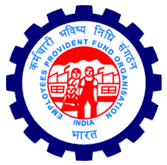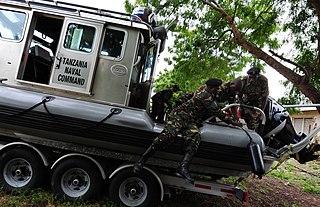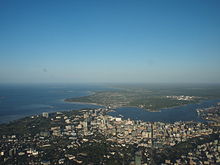In the United States, a 401(k) plan is an employer-sponsored, defined-contribution, personal pension (savings) account, as defined in subsection 401(k) of the U.S. Internal Revenue Code. Periodic employee contributions come directly out of their paychecks, and may be matched by the employer. This legal option is what makes 401(k) plans attractive to employees, and many employers offer this option to their (full-time) workers. 401(k) payable is a general ledger account that contains the amount of 401(k) plan pension payments that an employer has an obligation to remit to a pension plan administrator. This account is classified as a payroll liability, since the amount owed should be paid within one year.

A pension is a fund into which amounts are paid regularly during the individual's working career, and from which periodic payments are made to support the person's retirement from work. A pension may be:
A pension fund, also known as a superannuation fund in some countries, is any program, fund, or scheme which provides retirement income.

The Employees' Provident Fund Organisation (EPFO) is one of the two main social security organization under the Government of India's Ministry of Labour and Employment and is responsible for regulation and management of provident funds in India, the other being Employees' State Insurance. The EPFO administers the mandatory provident fund, a basic pension scheme and a disability/death insurance scheme. It also manages social security agreements with other countries. International workers are covered under EPFO plans in countries where bilateral agreements have been signed. As of May 2021, 19 such agreements are in place. The EPFO's top decision-making body is the Central Board of Trustees (CBT), a statutory body established by the Employees' Provident Fund and Miscellaneous Provisions (EPF&MP) Act, 1952. As of 2018, more than ₹11 lakh crore are under EPFO management.
The Mandatory Provident Fund, often abbreviated as MPF (強積金), is a compulsory saving scheme for the retirement of residents in Hong Kong. Most employees and their employers are required to contribute monthly to mandatory provident fund schemes provided by approved private organisations, according to their salaries and the period of employment.

Rostam Abdulrasul Azizi is a self-made Tanzanian billionaire, business magnate, economist and former politician. In 2013, according to Forbes Magazine he was the first Tanzanian dollar billionaire with a net worth of over 1 billion dollars, in 2023 he had amassed a net worth of 1.2 billion dollars. and according to Henley & Partners Africa wealth report 2022, and was only dollar billionaire in East Africa.
Benjamin William Mkapa Pension Tower, formerly known as Mafuta House, is one of the tallest buildings in Dar es Salaam, Tanzania. It is a multi-million U.S. Dollar building owned by the National Social Security Fund (NSSF) that will be used for retail and commercial space.
Social security in India includes a variety of statutory insurances and social grant schemes bundled into a formerly complex and fragmented system run by the Indian government at the federal and the state level. The Directive Principles of State Policy, enshrined in Part IV of the Indian Constitution reflects that India is a welfare state. Food security to all Indians are guaranteed under the National Food Security Act, 2013 where the government provides highly subsidised food grains or a food security allowance to economically vulnerable people. The system has since been universalised with the passing of The Code on Social Security, 2020. These cover most of the Indian population with social protection in various situations in their lives.

Tanzania has a hierarchical health system which is in tandem with the political-administrative hierarchy. At the bottom, there are the dispensaries found in every village where the village leaders have a direct influence on its running. The health centers are found at ward level and the health center in charge is answerable to the ward leaders. At the district, there is a district hospital and at the regional level a regional referral hospital. The tertiary level is usually the zone hospitals and at a national level, there is the national hospital. There are also some specialized hospitals that do not fit directly into this hierarchy and therefore are directly linked to the ministry of health.

The National Social Security Fund (NSSF) is a quasi-government agency responsible for the collection, safekeeping, responsible investment, and distribution of retirement funds from employees of the private sector in Uganda who are not covered by the Government Retirement Scheme. Participation for both employers and employees is compulsory. The Uganda National Social Security Fund is the largest pension fund in the countries of the East African Community, with total assets of USh18.58 trillion, as of June 2023.
This is a list of the federal institutions of Tanzania.
The National Pension System (NPS) is a defined-contribution pension system in India regulated by Pension Fund Regulatory and Development Authority (PFRDA) which is under the jurisdiction of Ministry of Finance of the Government of India. National Pension System Trust was established by PFRDA as per the provisions of the Indian Trusts Act of 1882 for taking care of the assets and funds under this scheme for the best interest of the subscriber.

India–Tanzania relations refers to the current and historical relations between India and Tanzania. India has a High Commission in Dar es Salaam, Tanzania has a High Commission in New Delhi, which is also accredited to Sri Lanka, Nepal, Bangladesh and Myanmar. Diplomatic relations are described as close, friendly and cooperative. 15,000 Indians visited Tanzania in 2007. In May 2011, Ex Prime Minister of India Manmohan Singh calls for strengthen cooperation with Tanzania. Trade between India and Tanzania amounted to 31 billion dollars in 2009–2010 and India is Tanzania's second-largest investor.
India operates a complex pension system. There are however three major pillars to the Indian pension system: the solidarity social assistance called the National Social Assistance Programme (NSAP) for the elderly poor, the civil servants pension and the mandatory defined contribution pension programs run by the Employees' Provident Fund Organisation of India for private sector employees and employees of state owned companies, and several voluntary plans.

Nyerere Bridge also unofficially known as Kigamboni Bridge is a 680-meter-long bridge located in the Dar es Salaam Region of Tanzania that connects the Temeke District's ward of Kurasini from the east to the west of Kigamboni District's Vijibweni ward across the Kurasini estuary. Construction work began in February 2012 and completed in April 2016.

The Tanzania Naval Command is the naval military branch of the Tanzania People's Defence Force (TPDF). It was established in 1971 with assistance from China.

The National Social Security Fund is a Kenyan government agency responsible for the collection, safekeeping, responsible investment and distribution of retirement funds of employees in both the formal and informal sectors of the Kenyan Economy. Participation for both employers and employees is compulsory. The fund is both a pension fund and provident fund.
Burundi–Tanzania relations are bilateral relations between Burundi and Tanzania. Burundi is a strategic partner of Tanzania in many areas, particularly trade. Since Burundi is a landlocked country, almost 80% of its goods are moved through by road to Dar es Salaam Port. Tanzania has also been a strategic partner in mediating the political tensions in the country. Both countries are members of the African Union.

Tanzania Mercantile Exchange is a commodity exchange in Tanzania. The commodities exchange is put in place to help various farmers access the domestic and global market better and obtain a fair price in selling of their produce. The exchange is currently undergoing training of their staff and is and has begun pilot trading in Sesame Seeds and Green Grams. The exchange plans to trade in coffee, cashew nuts, sesame, rice, sunflowers and maize, which are all currently traded under the warehouse receipt system. The Capital Market and Securities Authority (CMSA) currently oversees the operations of the exchange and is in the process of educating farmers to use the system, however, many farmers are skeptical to the system.

Poland–Tanzania relations are the diplomatic relations between the Republic of Poland and the United Republic of Tanzania. Both nations are members of the United Nations and the World Trade Organization.














